|
|
Brief introduction to piling.
This is contiguous piling. There is a deliberate gap between neighbouring piles. the additional concrete along the top is the pile cap. This spreads the force from the props across the centre to several piles.
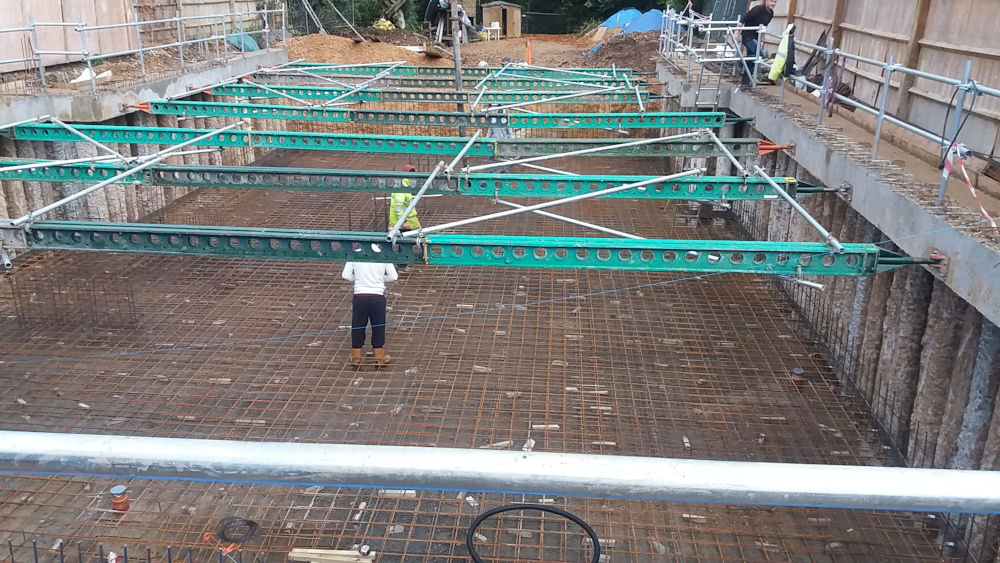
Big rigs become more cost-efficient the more piles need putting in. Perhaps more than about 100.
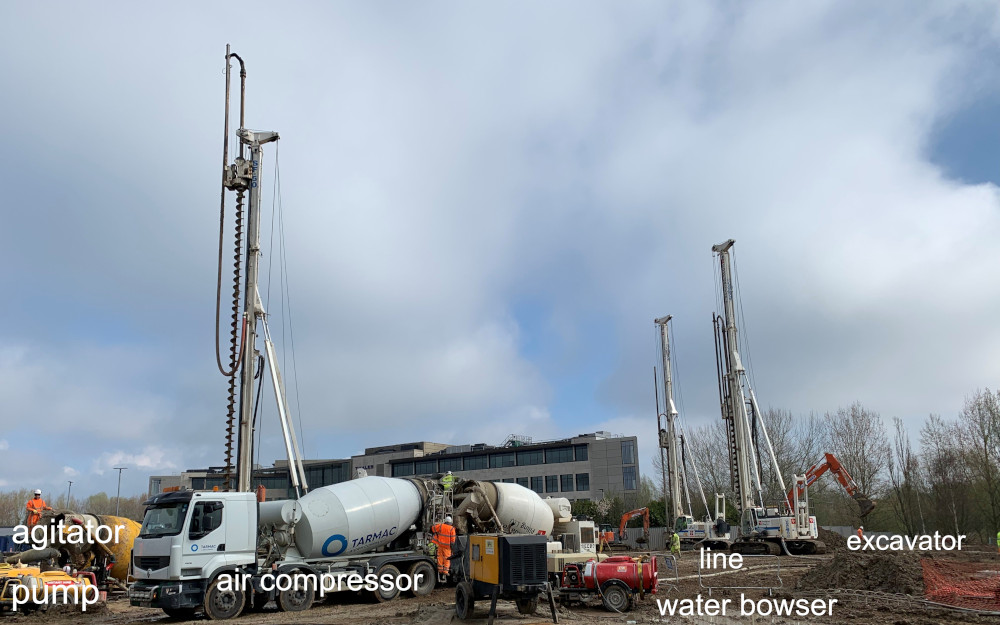
You can see that they need a lot of space for their setup and deliveries.
What you cannot see is 600mm to 900mm of compacted hardcore all over the site so that the rigs don't sink and tip over.
Or you might have a mini rig.
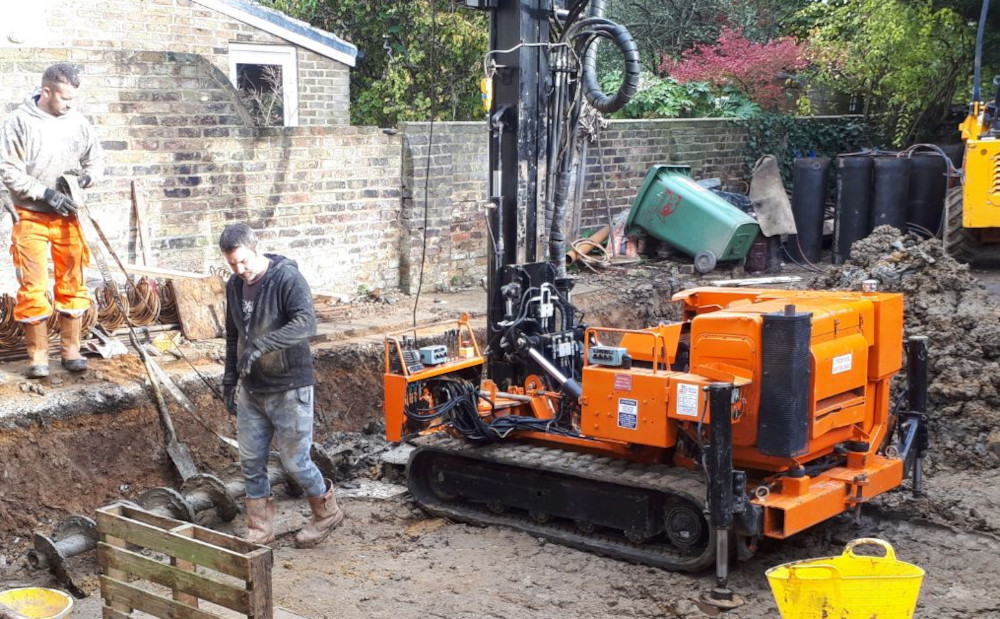
You can get a mini rig into a small space and you don't need any (or else a lot less) hardcore down first because they aren't tall.
Instead of being tall, you auger down a metre, disconnect the auger, lift up the head, add another section of auger, and so on. The reverse order when the hole is complete.
You get concrete delivered toward the end of the day when you fill the holes you dug.
You need very little more kit but they are slow. Perhaps a third of the speed, which might be 3 a day. Time is money so if you piled over 100 this way your costs might become more than the big rig.
If at any depth your soil is unstable, the big rigs can have an advantage if they can auger down but not remove all the material immediately; then pump concrete through the auger core to the very bottom, then withdraw the auger and soil slowly as more concrete is pumped in. In this way, the fragile sides might be well enough supported until concrete holds them back.
There are many solutions to many problems. After you get your soil report, and if it says piles are necessary, you could ask your structural engineer for a provisional pile layout before you spend much more money. Give them to some piling companies and ask what sort of money will you need to find. If you won't be able to find enough you might stop there with some money still in your wallet.
Piles take up space. If you want your basement to be as close to your neighbour's boundary as it possibly could be, you will still lose about 800mm both sides.
First, the rig has a heavy ring that holds the auger in position as it drills.
Second, the rig foreman probably wants a bit of distance between that ring and your neighbour, in case the rig kicks and demolishes something.
Probably safe to assume 300mm between the boundary and the back of the pile.
Most piles for a residential basement are 300mm diameter. But sometimes they need to be thicker.
The piles won't be in an exact straight line. And they won't all be perfectly perpendicular. By the time you excavate them all, you may have lost another 200mm because some are forward a lot at the bottom.
Then you need a minimum of 100mm of waterproof reinforced concrete against the piles for waterproofing and to give you a flat wall.
That is 900mm.
You might need insulation as well. Discussed on the energy saving page.
Then plasterboard.
This company claim to have a rig that gets closer.
Short 90 second video. A clever tool to clean mud off piles as you excavate.
Alternative ideas
Using underpinning techniques to support your excavation, instead of piles.
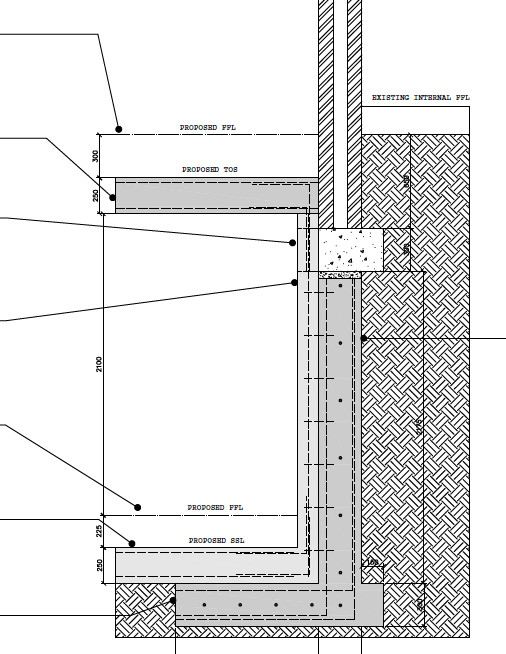
|
|
If you look at the photo below and this extract as well, a slot has been dug 1m wide under the house.
You can do this just the same if you don't have an existing house.
The floor is dug extra deep, perhaps 300mm extra deep, for a foot to a retaining wall.
It is reinforced as specified by your engineer and filled with concrete.
Then the wall at the back is reinforced and filled with concrete to a height that will support your new house above.
Now you miss 1m and dig another slot 1m wide. Reinforce and concrete just the same.
Your site might be big enough to have multiple slots sequenced to keep several gangs busy all day doing their bit. As long as you never open more than 1m in any 4m.

In due course, you find you are filling between two completed slots until it's all done.
|
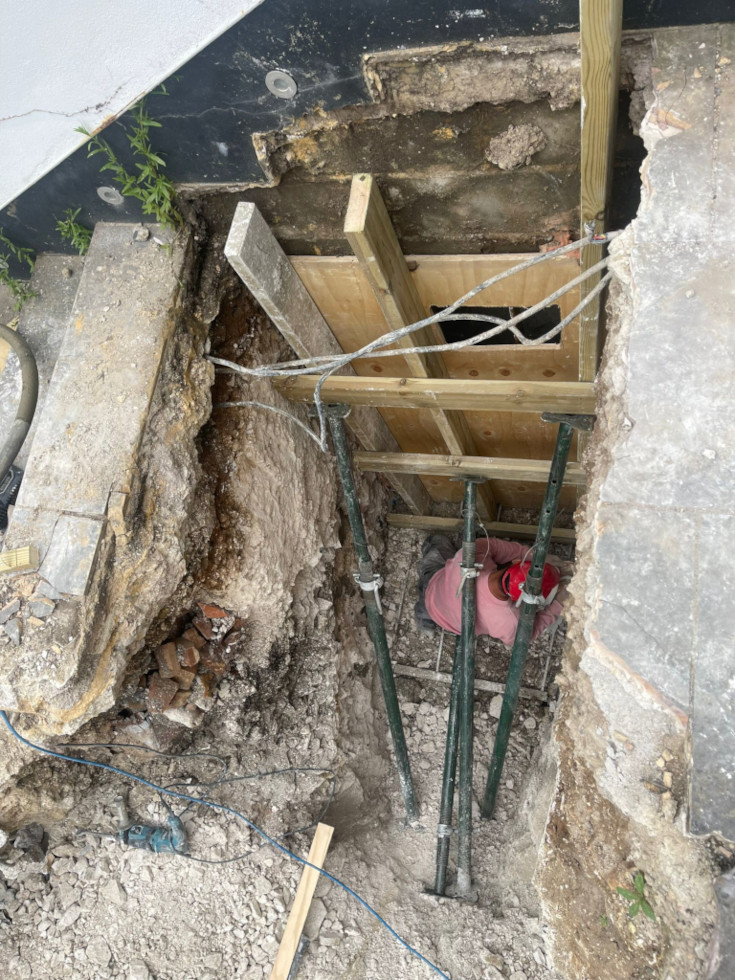
Next, you pour your actual reinforced waterproof concrete structural floor slab all over.
Then you cast your reinforced waterproof concrete walls against the underpinning slots, which is when you have the chance to make it all very neat.
The numerous fibreglass threaded rods I supply, are drilled and resin anchored into the concrete behind, meaning plenty of tying the two walls together.
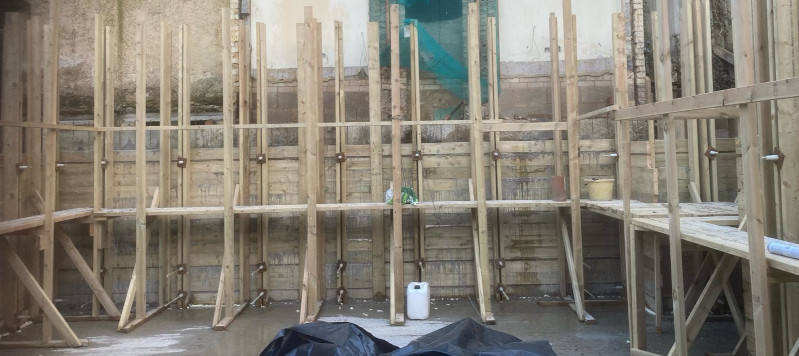
The benefits are:
-
Not going so deep, you remain insured against the cost of an injury etc.
-
You remove slightly less soil because piles are such a lot deeper.
-
You can get nearer to a boundary.
-
You don't have to prepare your site with a very deep piling mat that you later have to send to landfill.
-
All the wall concrete is poured downwards from above, whereas , if you look at the image at the top, you normally have to struggle getting concrete into the top because the pile cap has to overhang.
Obviously I am well aware that steel sheet piles are an alternative as well. But they don't get chosen for basement excavations.
One reason will be that steel sheet piles are generally rented. If you don't get them out at the end, you pay the hire until you give up trying to get them out and then you have to pay the hire company the full cost of replacement.
It is easy to set a rig or an excavator with an adaption next to the sheet and vibrate it in. Vibrating and damaging neighbouring properties can be another issue. But having to stretch 10m somehow from in front of your new basement to the farthest sheet to pull it out vertically can be too difficult. That's why they get left in.
Especially if concrete was cast against steel sheet piles. That grips them even more than just soil.
Back to the Basement Building Questions Answered menu.
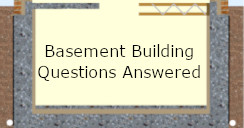
|
Back to the Basement Building Construction Manual menu.
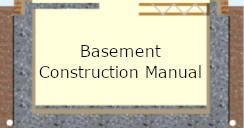
|
For a fixed fee of £199 I will answer all your questions by email. More details here.

|
|
|
|

